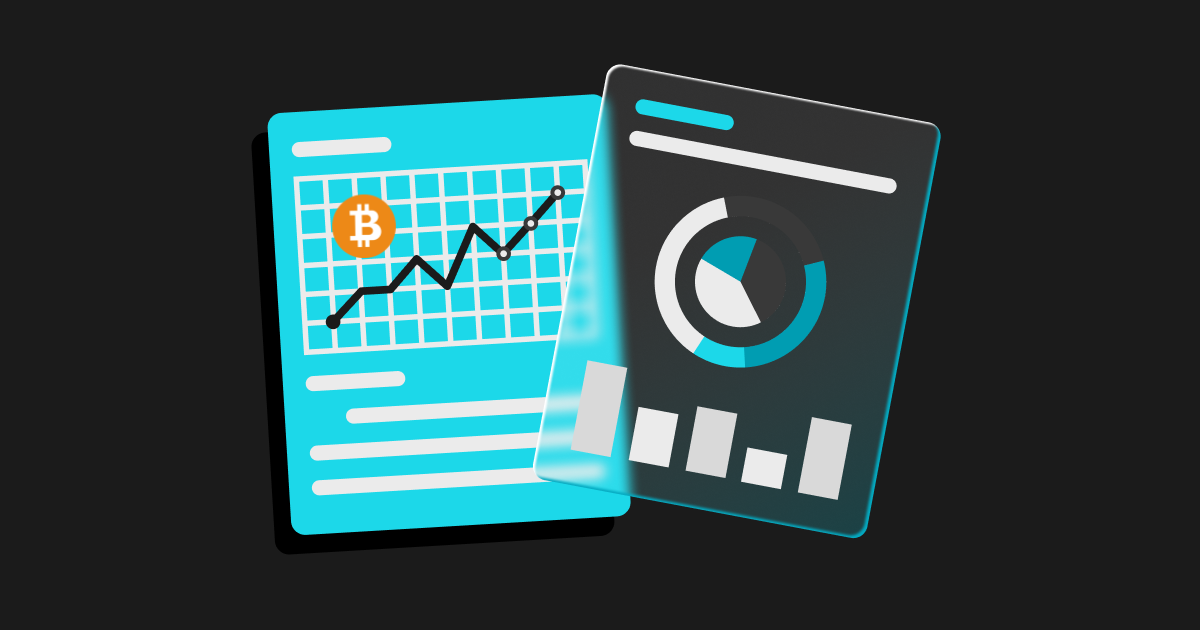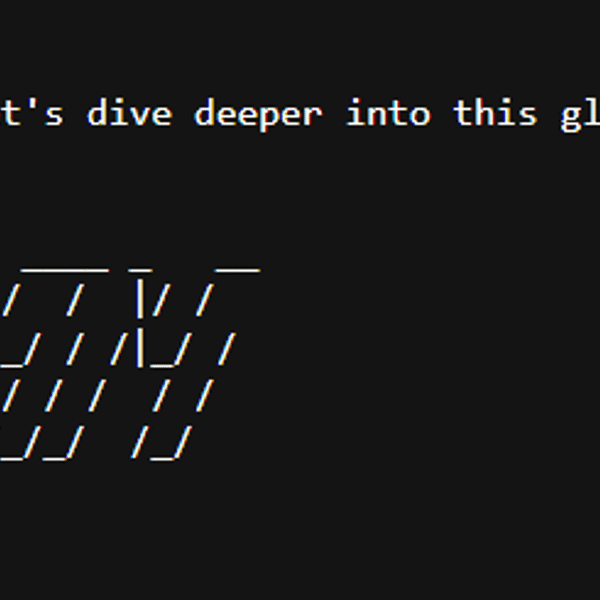Bitget:全球日交易量排名前 4!
BTC 市占率61.17%
Bitget 新幣上架 : Pi
BTC/USDT$ (NaN%)恐懼與貪婪指數70(貪婪)
山寨季指數:0(比特幣季)
比特幣現貨 ETF 總淨流量:+$5.2M(1 天);+$1.6B(7 天)。Bitget 新用戶立享 6,200 USDT 歡迎禮包!立即領取
到 Bitget App 隨時隨地輕鬆交易!立即下載
Bitget:全球日交易量排名前 4!
BTC 市占率61.17%
Bitget 新幣上架 : Pi
BTC/USDT$ (NaN%)恐懼與貪婪指數70(貪婪)
山寨季指數:0(比特幣季)
比特幣現貨 ETF 總淨流量:+$5.2M(1 天);+$1.6B(7 天)。Bitget 新用戶立享 6,200 USDT 歡迎禮包!立即領取
到 Bitget App 隨時隨地輕鬆交易!立即下載
Bitget:全球日交易量排名前 4!
BTC 市占率61.17%
Bitget 新幣上架 : Pi
BTC/USDT$ (NaN%)恐懼與貪婪指數70(貪婪)
山寨季指數:0(比特幣季)
比特幣現貨 ETF 總淨流量:+$5.2M(1 天);+$1.6B(7 天)。Bitget 新用戶立享 6,200 USDT 歡迎禮包!立即領取
到 Bitget App 隨時隨地輕鬆交易!立即下載

山寨季指數
在哪裡購買交易量最大的加密貨幣?在 Bitget 上追蹤流動性和交易量最大的山寨幣。
Bitget 山寨季指數頁面提供有關加密貨幣市場是否處於山寨季的即時分析。查看詳細圖表和指標,追蹤市場動態和山寨幣的主導趨勢。
目前的山寨季指數:
非山寨季 - 36
過去 90 天,市值前 100 名的加密貨幣中,約有 36 超過了比特幣,顯示加密貨幣市場目前不處於山寨幣主導的階段。
36
比特幣季山寨季
歷史數據
昨天非山寨季 - 35
7 天前非山寨季 - 26
30 天前比特幣季 - 15
年度從高到低
年度最高值山寨季 - 87
2024-12-03
年度最低值比特幣季 - 12
2025-03-05
最近更新時間
市值排名前 100 名的山寨幣近 90 天內的價格表現
查看所有幣種價格詳情
關於山寨季指數
什麼是山寨季指數?
山寨季指數是一種工具,用於衡量山寨幣(即比特幣以外的加密貨幣)與比特幣的相對表現。該工具透過分析歷史價格數據和市場趨勢,判斷市場重心是否轉向山寨幣,或仍集中在比特幣上。
如何辨識山寨季?
一般情況下,當特定時間內(如 90 天)表現最好的加密貨幣中絕大多數是山寨幣而非比特幣時,就被認為出現了山寨季。山寨季指數匯總了這些數據,當山寨幣超過比特幣表現時,指數分數較高;而當比特幣更具主導性時,指數分數則較低。
如何使用山寨季指數?
山寨季指數以各種方式幫助交易者和投資者:
- 辨識市場情緒轉向山寨幣的訊號。
- 根據山寨幣的表現調整市場進出時機。
- 根據市場變化調整投資組合。
什麼是山寨幣市場?
山寨幣市場包括所有除比特幣之外的加密貨幣,涵蓋如以太坊等成熟代幣、去中心化金融(DeFi)中的熱門代幣以及新興項目。「山寨幣市場」這個術語通常指投資者對這些替代加密貨幣的興趣和交易活動。
哪些山寨幣值得關注?
以太坊是最具代表性的山寨幣之一,因其智能合約功能和強大的開發者社群而受到關注。其他重要的山寨幣包括幣安幣(BNB)、Solana(SOL)和 Cardano(ADA),其各自擁有龐大的用戶基礎和獨特應用。
該指數包含哪些山寨幣?以太坊(Ethereum)是否被視為山寨幣?
山寨季指數通常包括基於市值和交易量的領先山寨幣,如以太坊(Ethereum)、XRP、Litecoin 和 Cardano。是的,以太坊被視為山寨幣,因為它不是比特幣;它是獨立開發的且擁有其區塊鏈,並專注於智能合約。
指數背後的計算方法是什麼?
山寨季指數的計算方法通常包括:
- 根據市值和交易量選擇一組山寨幣。
- 將這些山寨幣與比特幣在指定時間內(通常為 90 天)的表現進行比較。
- 將這些數據編制成單一指數值,用以指示當下市場環境是更傾向於「比特幣季」還是「山寨季」。
山寨季指數相關文章

XRP at $2.50 – Is This Just the Beginning? Find Out What’s Next!
Ripple’s native token, XRP, is making waves again. As of mid-May 2025, XRP has climbed to approximately $2.50, a price level not seen in years. This isn’t just a minor rally — it’s a powerful move reflecting a combination of market momentum, legal clarity, and renewed confidence in Ripple’s broader ecosystem.
Over the past month, XRP has risen more than 20%, and compared to its value a year ago — around $0.50 — it’s up a staggering 400%. For longtime holders and curious newcomers alike, the big question now is: what’s next?
XRP Crypto Price Surge: What's Fueling It?
In just the last few weeks, XRP has surged from $2.08 to $2.50, briefly touching $2.65 on May 12 before pulling back slightly. This run has been supported by strong trading volume, a bullish technical structure, and key developments from Ripple Labs itself.
The token’s market capitalization now exceeds $140 billion, putting it firmly among the top-tier cryptocurrencies by market value. Investors are paying attention — and not without reason.
Trade XRP on Bitget now!
Ripple’s Comeback: Legal Victory and Expansion Moves
One of the biggest catalysts for XRP’s resurgence is Ripple’s legal resolution with the U.S. Securities and Exchange Commission (SEC). After years of courtroom drama, a proposed settlement was reached. Ripple agreed to pay a $50 million penalty and regained access to $75 million in escrowed funds. Just as importantly, both Ripple and the SEC agreed to end all appeals, effectively closing one of the most high-profile regulatory cases in crypto history.
This resolution removed a major cloud over XRP, which had long been labeled by some regulators as an unregistered security. With legal uncertainty fading, institutional and retail investors alike are now viewing XRP with fresh eyes.
Meanwhile, Ripple isn’t slowing down. It launched a U.S. dollar-backed stablecoin, RLUSD, which saw explosive growth within weeks. Integrated directly into Ripple’s payments system, RLUSD offers new use cases and highlights Ripple’s ambitions to become a full-scale fintech powerhouse.
Adding to that momentum is Ripple’s acquisition of Hidden Road, a global multi-asset prime brokerage, for a reported $1.25 billion. This move gives Ripple access to key licenses and infrastructure to serve institutional clients — a strategic play that could drive future demand for XRP as a liquidity bridge in cross-asset settlement.
XRP on the Global Stage
Ripple is also making inroads internationally. Some global banks have reportedly tested XRP in SWIFT messaging environments, and leaked documents suggest Mastercard may consider XRP for cross-border remittance flows.
Real-world usage is already happening in places like Japan, where SBI Remit leverages XRP to facilitate international payments. While XRP’s presence in day-to-day retail use remains limited, its role in backend financial infrastructure continues to grow.
Ripple has also continued its tradition of corporate social responsibility. In 2025, the company donated $100,000 worth of XRP to support wildfire relief efforts, underlining its broader commitment to public engagement.
Regulation: From Obstacle to Opportunity
Just a year ago, regulatory risk was one of the biggest red flags hanging over XRP. Now, the picture looks quite different.
With a more crypto-friendly SEC chair in place and bipartisan calls for clear, principles-based regulation, the U.S. is shifting toward a more constructive approach. Ripple’s cooperation and successful settlement with regulators may even serve as a model for future enforcement resolutions.
Globally, the regulatory environment continues to evolve. Europe’s MiCA framework is setting the tone for digital asset governance, while countries like Japan, Singapore, and the UK are refining their crypto policies — often treating tokens like XRP as legitimate digital property.
Even in the notoriously strict state of New York, Ripple’s RLUSD stablecoin has received regulatory approval, signaling increased alignment between Ripple’s operations and official oversight.
Technical Outlook: Momentum and Milestones
From a charting perspective, XRP has entered bullish territory. It’s trading well above its 50-, 100-, and 200-period moving averages, with $2.23 and $2.40 acting as short-term support zones.
Resistance is stacked near the recent high of $2.65 and the key psychological level of $3.00. A break above $3.00 would represent a significant milestone — one that hasn’t been seen since early 2021.
Momentum indicators are mixed. The RSI has cooled off from overbought levels, now hovering in the low 60s, while the MACD remains in positive territory. This suggests the rally has room to continue, but any failure to hold support near $2.30 could lead to a period of consolidation.
What Are the Experts Saying?
Analysts are watching XRP’s price action closely. Many believe $2.50 is a pivotal level — a threshold that could either fuel the next leg up or signal a reversal if broken.
Some strategists predict a short-term range of $2.00 to $2.65, with a breakout above $2.65 potentially opening the path toward $3.00 or even $3.50. On the more ambitious side, bullish long-term forecasts suggest XRP could reach $10 by 2030, especially if Ripple follows through on speculation about a public listing and further integration of XRP into institutional workflows.
However, more conservative models suggest XRP may trade between $2.50 and $2.90 for much of 2025, especially if broader crypto market sentiment turns sideways or bearish.
Real Utility vs. Hype: Can XRP Compete?
The case for XRP has always hinged on utility. Ripple positions XRP as a “bridge currency” that allows banks and financial institutions to instantly settle cross-border transactions without holding multiple fiat balances.
It’s fast — processing in just 3–5 seconds — and cheap to use, with fees measured in fractions of a cent. It’s also energy efficient, relying on a consensus algorithm that doesn’t require mining.
But competition is fierce. Stellar (XLM), originally founded by a Ripple co-founder, offers a similar value proposition. Meanwhile, Ethereum-based stablecoins (like USDC and USDT) dominate DeFi, and central banks around the world are experimenting with their own digital currencies (CBDCs), which could one day challenge the need for bridge tokens.
That said, XRP has a strong legacy, a global brand, and a growing network. Its real advantage may lie in being one of the few tokens with both institutional credibility and technical readiness to scale across borders.
Conclusion
XRP’s climb to $2.50 marks more than just a price milestone — it represents a dramatic shift in the narrative. After years of legal battles and market doubt, Ripple has emerged with a clearer path forward, stronger infrastructure, and renewed investor interest. The combination of real-world adoption, expanding institutional partnerships, and regulatory clarity has turned what was once considered a stagnant altcoin into one of 2025’s most talked-about assets.
But even with momentum on its side, XRP’s future is far from set in stone. The crypto space moves fast, and staying relevant means more than just making headlines — it means winning users, sustaining demand, and outpacing the competition. Whether $2.50 is the launchpad to $3, $5, or beyond, or simply a peak before a pause, depends on what Ripple — and the market — does next. What’s clear is this: XRP is no longer being ignored. And for the first time in a long time, the world is watching closely.
Register now and explore the wonderful crypto world at Bitget!
Disclaimer: The opinions expressed in this article are for informational purposes only. This article does not constitute an endorsement of any of the products and services discussed or investment, financial, or trading advice. Qualified professionals should be consulted prior to making financial decisions.
Bitget 學院2025-05-13 09:36

Why Is Crypto Going Up Today? Bitcoin Breaks $100K and Sparks Market Rally
Crypto is booming — and all eyes are on Bitcoin. On May 10, 2025, Bitcoin officially broke past the $100,000 mark, reigniting excitement across the entire crypto market. This long-awaited milestone isn’t just a price tag — it’s a psychological turning point that’s sparking renewed confidence, fresh investor interest, and a wave of bullish momentum. As Bitcoin soared, altcoins followed closely behind, with Ethereum, Solana, and even meme coins like Dogecoin posting impressive gains. It’s clear: today isn’t just another green day — it’s a breakout moment.
So, why is crypto going up today? This rally isn’t being driven by a single headline. Instead, it's a powerful mix of macroeconomic shifts, institutional buying, regulatory developments, and pure market momentum. From ETF inflows to Fed policy changes, from state-level crypto laws to short squeezes, there’s a perfect storm pushing crypto prices higher. In this article, we’ll unpack the biggest catalysts behind today’s surge, what it means for Bitcoin and beyond — and whether this is just the beginning of a much larger move.
Bitcoin Breaks $100K: A Milestone Moment
Bitcoin has officially blasted through the $100,000 mark today, May 10, 2025, sparking a wave of excitement across the entire crypto market. At its peak, BTC reached approximately $104,000, a level not seen since early February. The rally has pushed the total crypto market capitalization to an estimated $3.2 to $3.3 trillion, as nearly every major cryptocurrency surged in tandem.
Breaking the six-figure barrier is more than just a price milestone — it’s a massive psychological win. Traders, investors, and even skeptics are buzzing on social media, with search trends for terms like “Bitcoin price today” and “crypto rally May 2025” spiking in real time. Over the past month, BTC has climbed over 26%, and it's now up nearly 60% year-over-year. Clearly, this momentum didn’t come out of nowhere — a perfect storm of catalysts has set the stage for this breakout.
Trade BTC on Bitget now!
Why Is Crypto Going Up? Key Drivers of the May 2025 Rally
The crypto rally of May 2025 isn’t happening by chance — it’s the result of several powerful forces converging at once. Bitcoin’s breakout above $100K has been fueled by a combination of macroeconomic shifts, growing institutional interest, regulatory tailwinds, and classic market momentum. Let’s break down the biggest catalysts behind today’s surge.
1. Favorable Macroeconomic News
The broader economic environment has suddenly turned more favorable for crypto. The U.S. Federal Reserve recently paused interest rate hikes, signaling a potential end to the tightening cycle. Investors are now speculating that rate cuts may arrive later in 2025 as economic growth slows, creating a more supportive environment for risk assets like tech stocks and cryptocurrencies.
Meanwhile, global trade tensions have cooled. U.S. President Donald Trump announced a landmark trade deal with the UK and hinted at significantly lowering tariffs on China. These developments boosted market optimism and revived risk appetite across financial markets. On top of that, Trump’s earlier executive order to establish a strategic crypto reserve has helped frame Bitcoin as a geopolitical hedge. The result? A wave of capital flowing into crypto assets.
2. Regulatory and Adoption Tailwinds
Positive regulatory news has added even more fuel to the fire. In just the past 24 hours, three U.S. states passed crypto-friendly laws, signaling that digital assets are gaining legitimate traction at the state level. For example:
Arizona approved the creation of a Bitcoin and digital asset reserve fund.
Oregon updated commercial laws to recognize crypto assets as collateral, boosting legal clarity.
New Hampshire became the first state to hold Bitcoin in its treasury reserves.
These developments are pushing crypto closer to mainstream adoption. Even at the federal level, signs of a more balanced approach are emerging. A recent SEC commissioner dissent hinted at internal disagreements within the agency, sparking hopes that overly strict crypto policies may soon soften. With clearer rules and growing state-level support, regulatory uncertainty — a long-standing drag on crypto — is finally beginning to lift.
3. Institutional Investment and ETF Inflows
Institutional money is pouring into Bitcoin, creating strong demand pressure. In the past two weeks alone, Bitcoin ETFs have seen over $5.3 billion in net inflows, with consistent buying nearly every day. Big players like BlackRock are adding thousands of BTC to their portfolios, reinforcing Bitcoin’s role as a mainstream macro asset, similar to gold.
It’s not just ETFs — corporate treasuries, hedge funds, and wealthy individuals are also increasing their exposure. With inflation risk still lingering and the U.S. dollar’s long-term strength in question, many are turning to Bitcoin as a hedge against monetary instability. This level of institutional interest is helping to validate the asset in the eyes of more cautious investors — and bringing serious buying power into the market.
4. Momentum, Liquidations, and FOMO
Once Bitcoin started climbing, the market’s internal mechanics kicked in. The $100K breakout caught many short sellers off guard, triggering over $100 million in short liquidations in a single day. When shorts are liquidated, they’re forced to buy back BTC — pushing prices even higher. This sets off a feedback loop of gains, as each price surge triggers more forced buying.
Add to that a rising wave of FOMO (fear of missing out). As Bitcoin dominates headlines, retail traders are jumping back in, hoping not to miss the next leg up. Technical indicators like MACD and RSI have also flipped bullish, convincing traders that this rally still has room to run. In crypto, momentum matters, and right now, the momentum is firmly on the side of the bulls.
All these forces have come together to create the perfect storm. A friendlier Fed, a more open regulatory landscape, heavy institutional inflows, and self-reinforcing market mechanics have aligned to push Bitcoin through $100K — and with it, the entire crypto market is riding the wave.
Altcoins Are Surging Too: Ethereum & Others Join the Rally
While Bitcoin breaking $100K is grabbing all the headlines, it’s far from the only asset making waves. In true bull market fashion, altcoins are surging alongside Bitcoin, delivering big gains across the board. When BTC rallies this hard, it often lifts the entire market — and that’s exactly what we’re seeing in May 2025.
Leading the altcoin charge is Ethereum (ETH). The second-largest cryptocurrency is up over 30% this week, recently breaking through the $2,400 level. In just the past 24 hours, ETH jumped nearly 13%, fueled by two major bullish catalysts: the completion of the Pectra network upgrade, which improved efficiency and scalability, and a headline-grabbing purchase of over $3.5 million worth of ETH by a fund tied to Donald Trump. These events have supercharged Ethereum’s momentum and pushed its market cap to new local highs. When ETH starts to outperform, it’s often a sign that investors are warming up to riskier assets — a clear indicator of an approaching altcoin season.
But Ethereum isn't alone. Other top altcoins are also lighting up:
XRP is trading above $2.37, extending its weekly gain to around 8%, as positive legal developments continue to build investor confidence.
BNB surged to roughly $661, rising 10% this week, reflecting a boom in exchange activity.
Solana (SOL) climbed 5% today and is up over 16% on the week, now hovering near $170 with a market cap approaching $90 billion.
Cardano (ADA) and Polygon (MATIC) are both seeing solid mid-single-digit gains, joining the broader bullish wave.
And yes — meme coins are back in full force. Longtime favorites like Dogecoin (DOGE) popped over 13%, now trading around $0.22, while Shiba Inu (SHIB) spiked by 9%. Meanwhile, newer community tokens like Pepe (PEPE) are riding the hype train, with PEPE surging another 13% today. When speculative coins rally, it’s usually a sign that traders are feeling confident — and flush with profits.
One important trend to watch: Bitcoin dominance is starting to slip. As BTC crossed $100K, its share of total crypto market cap dipped from about 65% to 63.9%, suggesting that investors are rotating into altcoins in search of higher upside. Altcoin performance indices have also surged (one major index jumped from 23 to 36 in early May), adding more weight to the altcoin season narrative.
The key takeaway? This isn’t just a Bitcoin breakout — it’s a full-blown market-wide rally. From large caps like ETH and SOL to the wild world of meme coins, the entire crypto ecosystem is heating up. It’s a sign that sentiment is improving across the board, and traders are ready to ride this momentum beyond just BTC.
Crypto Market Sentiment: Bullish with a Side of Caution
The overall mood in the crypto community right now is cautiously bullish. There’s a strong sense of optimism in the air — after months of waiting, Bitcoin is finally back above $100,000 and is now just a few percentage points away from its previous all-time high of around $107K. Crypto forums and social media are buzzing with talk of price discovery, and many traders are eyeing new record highs if this momentum holds. With institutional investors driving a large chunk of this rally, there’s a feeling that this isn’t just retail hype — it's real, strategic money moving into the space.
That said, experienced traders know the market doesn’t move straight up forever. After such a fast climb, some cooling off or consolidation around $100K is possible. If that happens, many expect to see a rotation into altcoins, as investors take profits from BTC and look for higher-growth opportunities elsewhere. There are also macro factors that could shift the momentum — another Fed policy update, surprise inflation data, or geopolitical shifts could either supercharge or stall the rally.
Still, the tone remains more optimistic than it’s been in months. A pause in Fed rate hikes, favorable crypto regulation, ETF inflows, and positive headlines from top states and institutions have flipped the script for digital assets. Bitcoin is increasingly being viewed as a hedge against uncertainty, and altcoins are thriving in the wake of its success. It’s no surprise that searches for terms like “crypto rally May 2025” are trending — everyone from long-time HODLers to curious newcomers is watching closely to see where the market heads next.
Conclusion
The events of May 10, 2025, could go down as a defining moment in this crypto cycle. Bitcoin’s breakout above $100,000 didn’t just move the needle — it flipped the entire sentiment of the market. Fueled by macro tailwinds, institutional demand, regulatory progress, and a wave of altcoin enthusiasm, today’s rally feels like more than a temporary spike. It feels like the start of something bigger.
Of course, markets don’t move in a straight line, and short-term pullbacks are always possible. But the foundation behind this surge — real adoption, serious capital, and improving regulation — suggests this bull run has legs. Whether you’re all-in on BTC or exploring altcoins, one thing’s clear: crypto is back in the spotlight. And this time, it’s not just hype — it’s momentum with meaning.
Register now and explore the wonderful crypto world at Bitget!
Disclaimer: The opinions expressed in this article are for informational purposes only. This article does not constitute an endorsement of any of the products and services discussed or investment, financial, or trading advice. Qualified professionals should be consulted prior to making financial decisions.
Bitget 學院2025-05-10 09:35

Crypto Fear & Greed Index: Your Guide to Smarter Trading Decisions
If you’ve ever watched the crypto market swing wildly from big gains to sudden crashes, you’ve seen the power of emotions in action. Fear and greed are two of the biggest forces driving crypto prices. When traders get scared, they sell fast—pushing prices down. When they get greedy, they buy aggressively—often fueling bubbles. These emotional waves can be hard to spot if you’re new to the market, but there’s a simple tool that helps: the Crypto Fear & Greed Index.
This index measures the overall sentiment of the crypto market and sums it up in a single number, from 0 (Extreme Fear) to 100 (Extreme Greed). It’s designed to help traders understand whether the market is acting cautiously or getting carried away. In this article, you’ll learn what the Crypto Fear & Greed Index is, how it works, and how you can use it to make more informed and less emotional trading decisions.
What Is the Crypto Fear & Greed Index?
The Crypto Fear & Greed Index is a daily indicator that tracks the overall mood of the cryptocurrency market. It was created in early 2018 by the data analytics platform Alternative.me, inspired by a similar index used in the traditional stock market. The purpose of the index is to measure the emotional state of crypto investors and simplify it into a single score between 0 (Extreme Fear) and 100 (Extreme Greed).
● A score close to 0 means traders are nervous or pessimistic—often selling off assets out of fear.
● A score near 100 means traders are overly optimistic and possibly chasing prices during a market hype cycle.
The idea behind the index is based on a well-known truth in investing: markets are driven by emotion, not just logic. When fear dominates, people tend to sell low. When greed takes over, they often buy high. By tracking this behavior, the index can help traders recognize emotional extremes and act more rationally.
How the Crypto Fear & Greed Index Works
The Crypto Fear & Greed Index doesn’t pull its score out of thin air—it’s based on multiple data sources that reflect investor sentiment from different angles. Each factor is assigned a specific weight in the final score, and the index is updated daily to reflect the latest mood of the market.
1. Volatility (25%)
This measures how much Bitcoin’s price is fluctuating compared to recent averages (usually over 30 and 90 days). High volatility—especially sharp price drops—suggests fear is rising in the market.
2. Market Momentum and Volume (25%)
This component looks at current trading volume and market momentum. When prices are going up and volume is rising, it signals greed. If volume drops during a price fall, it suggests fear and hesitation.
3. Social Media Sentiment (15%)
The index tracks Twitter mentions and engagement rates for crypto-related hashtags. A spike in positive posts or heavy interaction often reflects rising greed, while quiet or negative sentiment points to fear.
4. Surveys (15%) – currently paused
Previously, weekly polls were used to gauge public opinion on the market. While paused for now, this factor used to add a community-based perspective to the index.
5. Bitcoin Dominance (10%)
This looks at Bitcoin’s share of the total crypto market. When dominance increases, it suggests investors are moving funds away from altcoins into Bitcoin—a classic fear move. A drop in dominance implies higher risk appetite (greed).
6. Google Trends (10%)
This measures how often people search for certain crypto terms. Spikes in searches like “Bitcoin crash” show rising fear, while increased interest in terms like “buy Bitcoin” reflects greed and optimism.
All of these components are blended into one number that’s meant to act like a sentiment thermometer—telling you whether the market is hot with greed or cold with fear.
Understanding the Fear & Greed Scores
The Crypto Fear & Greed Index gives a score between 0 and 100, and each range represents a different level of market emotion:
● 0–24: Extreme Fear
The market is in panic mode. Prices have likely dropped, and many traders are selling out of fear. This could signal a potential buying opportunity, as the market might be oversold.
● 25–49: Fear
Sentiment is still negative, but not as intense. Investors are cautious and uncertain. This phase often follows recent price dips or negative news.
● 50: Neutral
Neither fear nor greed is dominating. The market may be consolidating, and traders are generally waiting to see what happens next.
● 51–74: Greed
Optimism is taking over. Prices may be trending up, and traders are more confident. Greed can drive rallies—but also set the stage for sudden pullbacks.
● 75–100: Extreme Greed
The market is euphoric. Everyone seems to be buying, FOMO is high, and prices may have surged quickly. This is often a warning sign that a correction could be coming.
The index doesn’t predict exact price movements, but it helps you recognize when the crowd might be overreacting. Knowing where the score sits can help you decide whether to be cautious or take advantage of opportunities others might be missing.
Using the Fear & Greed Index in Your Crypto Trading
The Crypto Fear & Greed Index isn’t just interesting to look at—it can actually be a helpful tool in shaping your trading strategy, especially if you’re just getting started. Here are some smart ways to use it:
1. Follow the Contrarian Rule: “Be Greedy When Others Are Fearful”
One of the most popular ways to use the index is as a contrarian indicator. When the score is in the “Extreme Fear” zone (below 25), it often means the market is oversold and close to a potential rebound. That could be a good time to research buying opportunities. On the flip side, if the index shows “Extreme Greed” (above 75), it might mean the market is overbought and due for a correction—so it could be time to take profits or tighten your risk management.
2. Use It to Manage Your Emotions
Crypto trading can be emotional, especially when prices swing wildly. Checking the index helps you take a step back and ask: “Am I reacting to the market, or following the crowd?” If you feel tempted to buy during extreme greed or panic-sell during extreme fear, the index can be your reality check.
3. Complement It with Other Tools
The index is most useful when combined with other indicators. For example, if your technical analysis shows a potential breakout but the index is flashing “Extreme Greed,” you might wait or use a tighter stop-loss. Or if the chart looks oversold and the index shows “Extreme Fear,” it might strengthen your conviction to enter.
4. Time Your Entries and Exits Smarter
While no tool can perfectly predict tops or bottoms, the index gives you insight into what the crowd is feeling. You can use that information to avoid chasing hype or selling too soon. Even just checking it daily can help you build more disciplined, less emotional habits.
Fear, Greed, and the Market: Lessons from History
The Crypto Fear & Greed Index becomes especially valuable when we look at how it behaved during some of the biggest moments in crypto history. These real examples show how market sentiment often swings to emotional extremes—and how those extremes can signal major turning points.
1. March 2020 – Extreme Fear During the COVID Crash
In March 2020, global markets crashed due to the sudden spread of COVID-19. Bitcoin dropped from over $9,000 to under $5,000 in just days. The index plummeted to below 10, signaling Extreme Fear. Many traders were panic selling. But in hindsight, this fear marked one of the best buying opportunities of the decade—Bitcoin would go on to break all-time highs within a year.
2. November 2021 – Extreme Greed at the Peak
When Bitcoin hit its all-time high of ~$69,000 in November 2021, the index was deep in Extreme Greed, showing readings above 80. Everyone seemed confident that prices would keep rising. Social media was full of bullish predictions, and altcoin speculation was at a peak. Shortly after, the market reversed and entered a prolonged bear phase.
3. June 2022 – Fear at the Bottom of the Bear Market
Following the collapse of Terra (LUNA), Celsius, and other platforms, the market was in chaos. Bitcoin dropped below $20,000, and the index again sank to Extreme Fear levels, hitting as low as 6. Many investors had lost confidence. Yet, this dark period eventually marked the bottom of the market, with a slow recovery beginning in early 2023.
These moments prove one key lesson: the crowd is often wrong at the extremes. When fear dominates, it may be a signal to look for value. When greed takes over, it may be time to think cautiously.
Fear & Greed vs. Other Market Sentiment Indicators
The Crypto Fear & Greed Index is a great snapshot of market mood—but it’s not the only way to measure sentiment. If you want a fuller picture, it helps to compare it with other tools and indicators that traders often use.
1. Bitcoin Misery Index (BMI)
Created by Fundstrat, the Bitcoin Misery Index focuses on how “happy” or “miserable” BTC holders are based on price and volatility. A low BMI (below 27) indicates misery—and possibly a good time to buy. A high BMI (above 67) suggests happiness, which could mean the market is overheating.
2. On-Chain Metrics
Sentiment can also be tracked through blockchain data, like how many coins are moving to or from exchanges. For example:
● High exchange inflows often mean people are preparing to sell—fear.
● High outflows suggest long-term holding—confidence or greed.
Other on-chain tools look at wallet activity, dormant coins moving, or “whale” behavior (large holders making big moves).
3. Derivatives Market Data
Traders also watch:
● Funding rates on futures platforms (positive = bullish/greed, negative = bearish/fear),
● Open interest (rising during uptrends may show overconfidence),
● Put/Call ratios (used more in traditional markets, but similar logic applies).
These indicators help gauge speculative pressure and risk appetite.
4. Social Listening Tools
Some platforms use AI or natural language processing to scan Twitter, Reddit, Telegram, and news articles to measure how people are talking about crypto. They track the ratio of positive vs. negative sentiment, often updated in real-time.
While the Fear & Greed Index is simple and easy to read, combining it with these other tools can give you a much clearer view of where the market really stands. Think of it like reading the weather: one tool tells you it might rain, but checking a few others confirms the storm is real.
Conclusion
The Crypto Fear & Greed Index is a simple yet powerful tool that helps you understand what the market is feeling—whether it’s gripped by panic or driven by excitement. For beginner traders, it offers a quick way to gauge overall sentiment and avoid making emotional decisions. When used wisely, it can help you recognize when the market might be too fearful (possibly a buying opportunity) or too greedy (a time for caution).
That said, no single indicator should guide your entire strategy. The index works best when combined with other tools like technical analysis, market news, and on-chain data. Use it as a compass—not a crystal ball—and it can become a valuable part of your trading routine. In a market ruled by emotions, staying calm and informed is one of the best edges you can have.
Click here to check the live Crypto Fear & Greed Index and make smarter decisions today!
Disclaimer: The opinions expressed in this article are for informational purposes only. This article does not constitute an endorsement of any of the products and services discussed or investment, financial, or trading advice. Qualified professionals should be consulted prior to making financial decisions.
Bitget 學院2025-05-09 07:46
山寨幣的類型
山寨幣在功能和共識機制上有所不同,根據這些差異,它們可以被劃分為多個類別。以下是一些主要類別的快速指南:
挖礦驅動的山寨幣挖礦驅動的山寨幣是依賴挖礦過程來完成交易驗證和區塊鏈更新的加密貨幣。根據山寨幣的設計,這個過程可能使用工作量證明(PoW)共識機制。比特幣、萊特幣和門羅幣是最知名的挖礦型山寨幣。
公鏈幣公鏈幣是原生代幣,用於支援和運作像以太坊(ETH)、Solana(SOL)和 Avalanche(AVAX)這樣的區塊鏈平台。它們主要用於支付網路交易手續費、執行智能合約以及參與網路治理。
穩定幣穩定幣與美元或歐元等法定貨幣的價值緊密掛鉤,確保用戶能夠在維持價格穩定的同時,實現快速且低成本的價值轉移。
功能型代幣功能型代幣用於在特定區塊鏈平台或去中心化應用程式(DApp)中獲取產品或服務。例如,用戶可能需要購買功能型代幣,以便在去中心化雲端平台上取得儲存空間,或參與去中心化金融(DeFi)服務。
證券代幣證券代幣是基於區塊鏈的數位資產,與傳統證券具有相似性。它們可能以所有權、分紅支付或債券的形式提供權益。證券代幣通常透過證券代幣發行(STO)或首次交易所發行(IEO)推出。
MEME 幣MEME 幣是一種由網路和社群媒體推動流行的加密貨幣,除了社群的支持和炒作,它們通常沒有明顯的實際用途或基礎價值。典型的 MEME 幣包括 DOGE、SHIB、PEPE 和 GOAT。
新幣模組
| 名稱 | 最新價 | 漲跌幅 | 24 小時成交額 | 上架時間 | 交易 |
|---|---|---|---|---|---|
 RDAC/USDT | 0.052601 | +952.02% | 1,236.42萬 | 2025-05-13 | 交易 |
 LAUNCHCOIN/USDT | 0.152 | +1420.00% | 201.04萬 | 2025-05-13 | 交易 |
 MAI/USDT | 0.006187 | -41.41% | 721.75萬 | 2025-05-12 | 交易 |
 DOOD/USDT | 0.00611 | +2.51% | 129.10萬 | 2025-05-09 | 交易 |
 SXT/USDT | 0.1434 | +6.30% | 1,084.96萬 | 2025-05-08 | 交易 |
 SHM/USDT | 0.2329 | +3.46% | 28.86萬 | 2025-05-08 | 交易 |
 OBOL/USDT | 0.23815 | -25.30% | 512.17萬 | 2025-05-07 | 交易 |
 SYRUP/USDT | 0.2614 | +5.91% | 81.93萬 | 2025-05-06 | 交易 |
 MYX/USDT | 0.1007 | -1.37% | 72.31萬 | 2025-05-06 | 交易 |
 GORK/USDT | 0.03345 | -21.14% | 1,475.59萬 | 2025-05-03 | 交易 |
 HOUSE/USDT | 0.04026 | -29.82% | 594.60萬 | 2025-04-30 | 交易 |
 HAEDAL/USDT | 0.15521 | -11.96% | 1,372.60萬 | 2025-04-29 | 交易 |
 MILK/USDT | 0.11086 | +1.76% | 1,719.32萬 | 2025-04-29 | 交易 |
 SIGN/USDT | 0.09478 | -0.93% | 546.81萬 | 2025-04-28 | 交易 |
 DEEP/USDT | 0.2051 | +3.90% | 12.32萬 | 2025-04-25 | 交易 |
 DOLO/USDT | 0.04821 | -2.27% | 13.19萬 | 2025-04-24 | 交易 |
 INIT/USDT | 1.43745 | +17.70% | 2,940.77萬 | 2025-04-24 | 交易 |
 ZORA/USDT | 0.01295 | +8.27% | 667.71萬 | 2025-04-23 | 交易 |
 HYPER/USDT | 0.1768 | +5.17% | 429.40萬 | 2025-04-22 | 交易 |
 EPT/USDT | 0.01195 | +10.24% | 831.04萬 | 2025-04-21 | 交易 |
在 Bitget 上購買山寨幣:領先的熱門加密貨幣平台
想買山寨幣嗎?透過 Bitget App,您可以直接購買 BGB 和其他主流山寨幣。立即了解如何在 Bitget 上購買山寨幣。
Bitget APP
買幣指南
如何購買
Bitcoin(BTC)

如何購買
Ethereum(ETH)

如何購買
Ripple(XRP)

如何購買
Tron(TRX)

如何購買
Dogecoin(DOGE)

如何購買
Tezo(XTZ)

如何購買
Bitget Token(BGB)

如何購買
Polygon(MATIC)

如何購買
Solana(SOL)

如何購買
Terra Classic(LUNC)

如何購買
Fantom(FTM)

如何購買
Bitcoin Cash(BCH)

如何購買
Ethereum Classic(ETC)

如何購買
Litecoin(LTC)

如何購買
Binance(BNB)

如何購買
Avalanche(AVAX)

如何購買
Internet Computer(ICP)

如何購買
Tether(USDT)

如何購買
USDC(USDC)

如何購買
Uniswap(UNI)






































































![BitTorrent [New]](https://img.bgstatic.com/multiLang/coinPriceLogo/c87b5c29752b2123cca40f4dd2c6b6501710522527061.png)




























